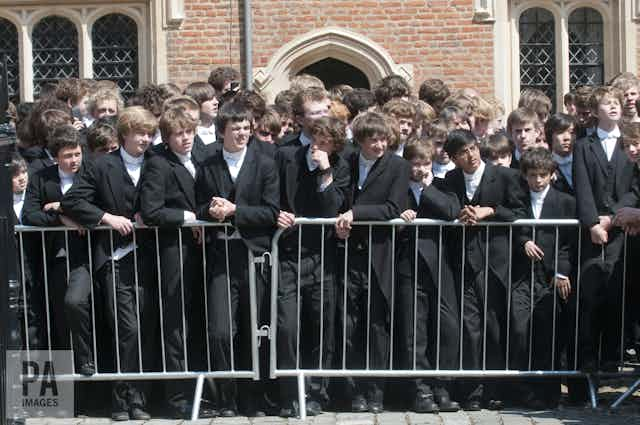The Independent Schools Council, a body representing 1,200 private schools, is offering to provide 10,000 annual free places to low-income pupils. As we prepare for an extended debate over the benefits of getting deprived children into private schools, we would do well to look back at the last government-backed attempt to do this: the long-gone Assisted Places Scheme.
The first education policy that Margaret Thatcher announced after she came to power in 1979, the scheme saw more than 75,000 pupils receive publicly-funded and means-tested assistance to attend some of the most selective and prestigious private schools in England and Wales over the course of 17 years.
The scheme was highly controversial, and when New Labour came to power in 1997 it was quickly abolished – and the arguments over its merits are now set to resume. They generally revolve around three main questions: whether it reached the right students, whether those students actually benefited from it, and whether it hurt nearby state-maintained schools.
Even with the benefit of hindsight, these are still complex questions. Here’s a brief outline of some evidence we can use to answer them.
#1: Did the scheme reach the right children?
One of the main criticisms of the scheme was that it didn’t reach the right pupils. While it was often framed as an attempt to “rescue” bright children from working class families and disadvantaged communities, the main criterion for eligibility, other than passing the school’s entrance examination, was financial need.
This meant the policy was significantly “colonised” by parents who might have been suffering short-term financial hardship (often because of divorce), but who were in many ways quite culturally and economically advantaged.
An early study of the scheme in 1989 found that fewer than 10% of those with an assisted place had fathers in manual jobs, whereas 50% had fathers in middle-class jobs. Almost all the employed mothers of assisted place pupils were also in middle-class jobs.
In general, it became clear that the majority of children who received assistance came from families with relatively strong educational inheritances, meaning the gap between what they’d have achieved without assisted places and what they managed with them was probably not as wide as imagined.
#2: Did pupils who received assisted places actually benefit?
There’s no straightforward answer to this one, but there’s little doubt that many individuals did benefit measurably from the scheme.
My colleagues and I have tracked the careers of a cohort of assisted place-holders over the last 30 years, and have found that for many of them, the scheme provided access to learning opportunities and experiences that they might not otherwise have had. In terms of qualifications, simple comparison of GCSE and A-level results revealed that our assisted place holders did better than our state-educated respondents, and better than might have been predicted on the basis of background socio-economic and educational inheritance variables.

But the academic achievement of those who held assisted places varies widely. The place-holders who saw the highest gains in qualifications were from middle-class backgrounds. The advantages for those from working-class backgrounds were less clear cut, and overall these pupils did worse than might be expected. This is largely because these pupils were disproportionately likely to have dropped out school before they were 18.
It seems these students found it difficult to thrive in the more socially exclusive environments of elite private schools. And while the degree results of assisted place-holders compare favourably with their state-educated counterparts, they were less likely to have completed their studies. Nearly one in ten dropped out of or failed their university courses.
In general, we concluded that if children from disadvantaged backgrounds stayed on at school and at university, they did well. However, the odds of these students “dropping out” were high.
#3: How did it affect neighbouring schools?
This is perhaps the most difficult question of all to answer. There is already considerable social segregation between many state-maintained schools, and it’s impossible to know what choices parents might have made had the Assisted Places Scheme not been available.
It might be argued that the impact was minimal, especially if the scheme benefited those who might have sent their children to private school anyway (as was often suggested – see question #1). The number of assisted places certainly wasn’t large enough to have any significant system-wide effect on admissions statistics. But the scheme’s ideological impact was perhaps more significant than the numbers of pupils involved. Simply by virtue of being in place, it sent a clear message that state-maintained non-selective schools are unable to meet the needs of the academically able.
Overall, then, the scheme’s history is a chequered one. Although individual schools and students did benefit, there’s plenty of evidence that this 30-year-long experiment was hardly an unqualified triumph. If the Independent Schools Council’s latest proposal is taken up and the government commits to once again helping poor and deprived pupils into private schools, the Assisted Places Scheme provides clear benchmarks for success.
Any new scheme must serve the people it’s actually meant to serve, and any schools that participate need to find ways of making students from disadvantaged backgrounds feel like they belong. And more than that, any such scheme has to be careful what message it’s sending about the state sector, where the overwhelming majority of eligible children will still spend their school years.

